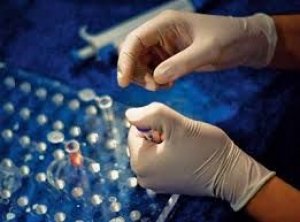
All iLive content is medically reviewed or fact checked to ensure as much factual accuracy as possible.
We have strict sourcing guidelines and only link to reputable media sites, academic research institutions and, whenever possible, medically peer reviewed studies. Note that the numbers in parentheses ([1], [2], etc.) are clickable links to these studies.
If you feel that any of our content is inaccurate, out-of-date, or otherwise questionable, please select it and press Ctrl + Enter.
Down syndrome and other genetic disorders will be able to be diagnosed from a photograph
Medical expert of the article
Last reviewed: 02.07.2025
 ">
">A group of specialists from the United States has developed new software that will give people the chance to identify various genetic abnormalities and recognize hidden hereditary diseases, including mental and physical retardation, from a photograph.
The new program is able to detect the disease by external manifestations that cannot be seen with the naked eye. The new development resembles the program used in the social network Facebook to establish identity.
Usually people with Down or Apert syndrome stand out from others. However, when the disease is at an early stage, is milder or does not lead to significant external changes, it is almost impossible to notice the disease.
The new program starts a special analysis when scanning an image, and is able to notice even what an experienced specialist will not see. The program currently diagnoses the following genetic abnormalities: Engelman, Treacher Collins, Cornelia de Lange, Williams, Apert, and Down syndromes.
In addition, the program is capable of diagnosing the rarest genetic disorder – pregeria (premature aging), which has been recorded in only 80 people in the world.
It is worth noting that most of the diseases diagnosed by the new program lead to significant changes in appearance.
For example, Cornelia da Lange syndrome causes a decrease in cranial volume, a short nose, fused eyebrows and strabismus, Treacher Collins syndrome changes facial proportions (different eye levels, tiny chin, etc.).
However, the disease is not always visible to the naked eye. Some diseases begin to progress only after the child reaches 2-3 years old, others worsen after 30 years.
The new program can analyze a photo of relatives to identify the “wrong” gene that can trigger the disease, and the program also works with children’s photos.
Doctors from Oxford suggest that such a prognosis of genetic abnormalities will allow for early detection of the disease and the beginning of preventive therapy, such as in Apert syndrome, when the coronary sutures of the skull grow together and increase the pressure on the brain, which leads to a decrease in intelligence. In this case, if the disease is detected at an early stage and suture fusion is prevented, the child's intellectual abilities can be preserved.
British scientists have noted that genetic abnormalities may be present in every seventeenth inhabitant of the planet. Symptoms of genetic diseases that significantly affect a person's life are manifested in every third patient. Most people live a normal life, without suspecting the possible risk that their genes carry. Some diseases begin to develop in old age, while others manifest themselves in children or grandchildren.
With the introduction of new computer technology into medical practice, a patient will be able to simply send a photo taken on a smartphone to the attending physician.


 [
[